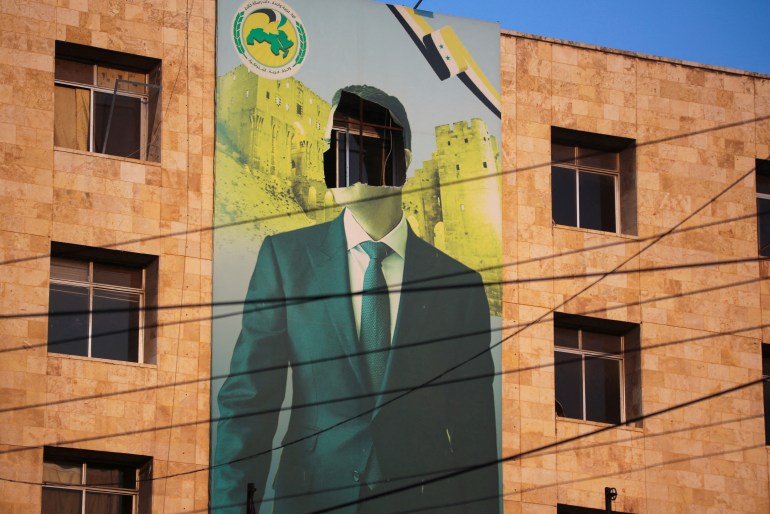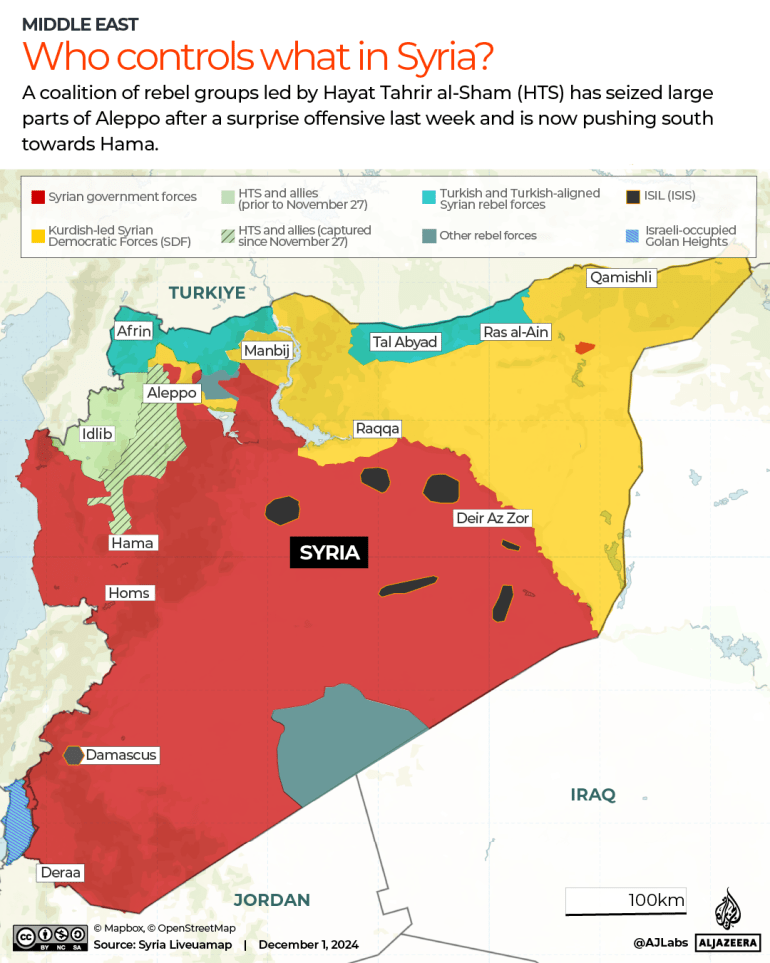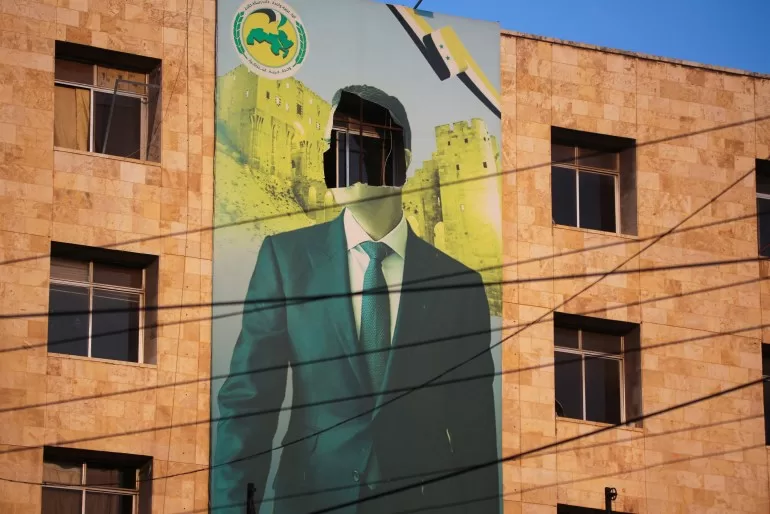Syrian opposition fighters have launched a lightning offensive, capturing most of Aleppo and arriving as far south as Hama in a matter of days as government forces retreated.
The rebels’ rapid gains – the most significant since 2016 – have thrust Syria’s various opposition factions back into the spotlight.
Since President Bashar al-Assad’s brutal response to peaceful demonstrators in 2011 led to people picking up arms to defend themselves, armed opposition groups have formed, allied with others and split up several times, making it hard to pinpoint their exact sizes and compositions.
Here’s everything we know about the opposition groups involved in Operation Deterrence of Aggression with a note at the end about another operation, Dawn of Freedom:
Operation Deterrence of Aggression – the control room
This umbrella group was formed to coordinate the military operation.
It developed out of the Fateh al-Mubin operations centre, which oversaw the activities of the armed opposition in northwestern Syria under the control of the Syrian Salvation Government (SSG).
The SSG is the Idlib-based technocratic administration of the opposition-held areas in the north and was set up in 2017.
Hayat Tahrir al-Sham (HTS)
HTS is the biggest fighting group in Operation Deterrence of Aggression.
Formerly Jabhat al-Nusra, then Jabhat Fateh al-Sham, it is a group of allied factions, including Jabhat Fateh al-Sham, Liwa al-Haqq, Jabhat Ansar al-Din and Jaysh al-Sunna.
At the start of the Syrian war, Jabhat al-Nusra was formed in 2012 by ISIL (ISIS), from which it split a year later and declared allegiance to al-Qaeda.
It severed ties with al-Qaeda and joined with other factions to rebrand as HTS in 2017.
HTS in effect controls Idlib and is estimated to have up to 30,000 fighters.
It also has economic control over swaths of territory and the resources there, including petroleum, which is a significant source of income for it as is the Bab al-Hawa border crossing with Turkiye.
HTS is largely self-funded and is understood to control the SSG, even announcing to the people of Aleppo that the various SSG ministers based in Idlib would now be serving Aleppo as well.

National Front for Liberation (NFL)
A number of the smaller fighting groups that make up the NFL participated in Operation Deterrence of Aggression, including the Jaish al-Nasr, Sham Corps and Free Idlib Army.
Established in Idlib in 2018, the NFL includes several northern Syrian factions, some of which also fall under the umbrella of the Free Syrian Army.
Like on many fronts, the NFL came together to counter threats by the regime to advance on Idlib.
Ahrar al-Sham Movement
Mostly active in Aleppo and Idlib, Ahrar al-Sham was established in 2011 as government forces violently repressed the Syrian revolution.
Its fighting force was estimated at more than 15,000 according to 2015 estimates.
It defines itself as a “comprehensive reformist Islamic movement, included and integrated within the Islamic Front”.
Jaish al-Izza
Focused in the northern reaches of the Hama governorate and some parts of Lattakia, Jaish al-Izza (the Army of Pride) is part of the Free Syrian Army.
As of 2019, it was estimated to have anywhere from 2,000 to 5,000 fighters and has received Western backing, including high-powered weapons.
Its fighters have joined the latest push into Syrian government territory, with one of its commanders, Mustafa Abdul Jaber, saying its quick success was partially due to the lack of Iranian manpower countering them.
Nur Eddin Zinki Movement
A powerful group that emerged in 2014 in Aleppo, “Zinki” tried to join forces with HTS in 2017, a move that did not work out as Zinki split off.
The two fought in 2018, and Zinki was routed from its positions of power in Aleppo in early 2019.
A year later, Zinki negotiated with HTS, and its fighters returned to the front lines, and it has had a presence among the opposition fighters since then.

Operation Dawn of Freedom
As the fighters involved in Deterrence of Aggression moved south towards Hama – and possibly even Damascus, some analysts expect – some of those armed opposition groups headed towards the northeast.
Abdurrahman Mustafa – the head of the Syrian Interim Government, an opposition government in northern Syrian areas not held by HTS and the SSG – announced that a new operation, Dawn of Freedom, had begun to “liberate” the northeast.
بينما يواصل شعبنا السوري كفاحه العادل لاستعادة حريته وتحرير وطنه من قيود الاستبداد والاحتلال والإرهاب، ومع تحقيق انتصارات ميدانية جديدة على يد أبطال الجيش الوطني والقوى الوطنية والثورية، تعلن الحكومة السورية المؤقتة بفخر انطلاق عملية فجر الحرية لتحرير المناطق التي يسيطر عليها… pic.twitter.com/jabvVrVZbQ
— Abdurrahman Mustafa (@STMAbdurrahman) November 30, 2024
Translation: As our Syrian people continue their just struggle for freedom … and with new victories achieved by the heroes of the National Army and the national and revolutionary forces, the Syrian Interim Government proudly announces the launch of Operation Dawn of Freedom to liberate areas controlled by the al-Assad regime and the separatist PKK and PYD militias. The liberation of these areas is an important step towards restoring Syrian territory … and paves the way for the return of refugees and displaced persons to their homes. All respect and appreciation to the heroes of the National Army and everyone who took up arms in defence of their people and their land against this oppressive regime. …
These armed groups – which mostly fall under the Syrian National Army, which in turn is under the Syrian Interim Government – were moving towards Kurdish-controlled areas, saying they were held by the PKK and PYD militias.
Turkiye’s PKK, or Kurdish Workers’ Party, is considered a “terrorist organisation” by Turkiye, Canada, the European Union and the United States. The PYD, or Democratic Union Party, is a left-wing Kurdish party in Syria.
